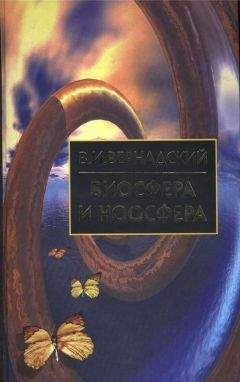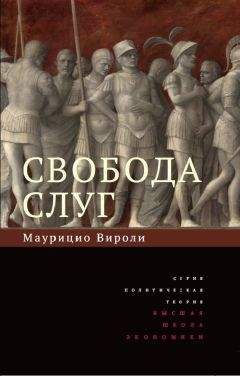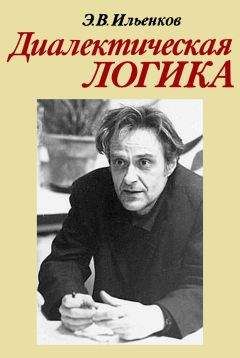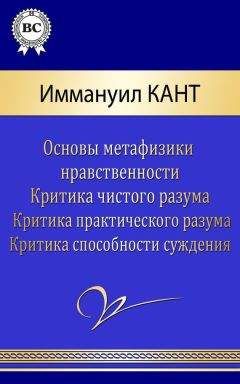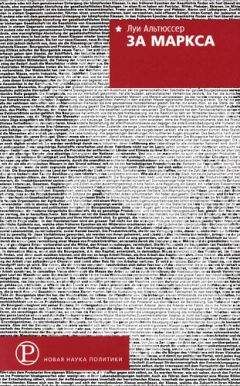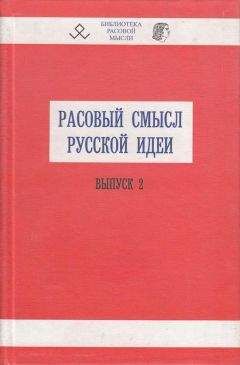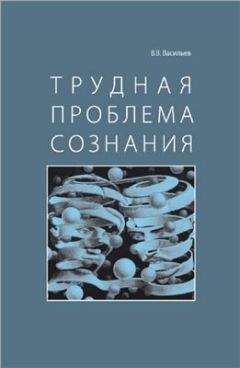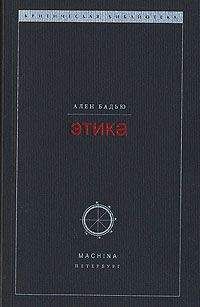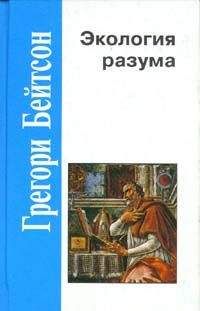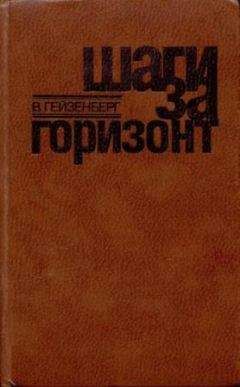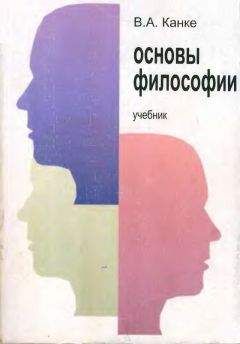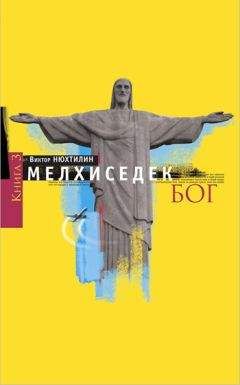Роджер Пенроуз - Тени разума. В поисках науки о сознании
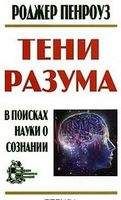
Скачивание начинается... Если скачивание не началось автоматически, пожалуйста нажмите на эту ссылку.
Жалоба
Напишите нам, и мы в срочном порядке примем меры.
Описание книги "Тени разума. В поисках науки о сознании"
Описание и краткое содержание "Тени разума. В поисках науки о сознании" читать бесплатно онлайн.
Книга знаменитого физика о современных подходах к изучению деятельности мозга, мыслительных процессов и пр. Излагаются основы математического аппарата — от классической теории (теорема Гёделя) до последних достижений, связанных с квантовыми вычислениями. Книга состоит из двух частей: в первой части обсуждается тезис о невычислимости сознания, во второй части рассматриваются вопросы физики и биологии, необходимые для понимания функционирования реального мозга.
Для широкого круга читателей, интересующихся наукой.
115] Elkies, Noam G. (1988). On A4 + B4 + C4 = D4. Maths, of Computation, 51, (No. 184), 825-835.
[116] Everett, H. (1957). "Relative State"formulation of quantum mechanics. В сб. Quantum theory and measurement (ed. J. A. Wheeler, W H. Zurek). Princeton University Press, 1983; первоначально в Rev. of Modern Physics, 29, 454-462.
[117] Feferman, S. (1988). Turing in the Land of O(z). В сб. The universal Turing machine: a half-century survey (ed. R. Herken). Kammererand Unverzagt, Hamburg.
[118] Feynman, R. P. (1948). Space-time approach to non-relativistic quantum mechanics. Revs. Mod. Phys., 20, 367-387.
[119] Feynman, R. P. (1982). Simulating physics with computers. Int. J. Theor. Phys., 21 (6/7), 467-488.
[120] Feynman, R.P. (1985). Quantum mechanical computers. Optics News, Feb., 11-20.
[121] Feynman, R.P. (1986). Quantum mechanical computers. Foundations of Physics, 16 (6), 507-531.
[122] Fodor, J. A. (1983). The modularity of mind. MIT Press, Cambridge, Massachusetts.
[123] Franks, N.P., Lieb, W.R. (1982). Molecular mechanics of general anaesthesia. Nature, 300, 487-493.
[124] Freedman, D. H. (1994). Brainmakers. Simon and Schuster, New York.
[125] Freedman, S.J., Clauser, J. F. (1972). Experimental test of local hidden-variable theories. В сб. Quantum theory and measurement (ed. J.A.Wheeler, W.H.Zurek). Princeton University Press, 1983; первоначально в Phys. Rev. Lett., 28, 938-941.6
[126] Frege, G. (1893). Grundgesetze der Arithmetik, begrif-fsschriftlich abelgeleitet, Vol. 1. H. Pohle, Jena.
[127] Frege, G. (1964). The basic laws of arithmetic, translated and edited with an introduction by Montgomery Firth. University of California Press, Berkeley.
[128] French, J. W. (1940). Trial and error learning in paramecium. J. Exp. Psychol., 26, 609-613.
[129] Frohlich, H. (1968). Long-range coherence and energy storage in biological systems. Int. Jour, of Quantum. Chem., 11, 641-649.
[130] Frohlich, H. (1970). Long range coherence and the actions of enzymes. Nature, 228, 1093.
[131] Frohlich, H. (1975). The extraordinary dielectric properties of biological materials and the action of enzymes, Proc. Natl. Acad. ScL, 72 (11), 4211-4215.
[132] Frohlich, H. (1984). General theory of coherent excitations on biological systems. В сб. Nonlinear electrodynamics in biological systems (ed. W. R. Adey, A. F. Lawrence). Plenum Press, New York.
[133] Frohlich, H. (1986). Coherent excitations in active biological systems. В сб. Modern bioelectrochemistry (ed. F. Gutmann, H. Keyzer). Plenum Press, New York.
[134] Fukui, K., Asai, H. (1976). Spiral motion of Paramecium caudatum in small capillary glass tube. /. Protozoal., 23, 559-563.
[135] Gandy, R. (1988). The confluence of ideas in 1936. В сб. The universal Turing machine: a half-century survey (ed. R. Herken). Kammererand Unverzagt, Hamburg.
[136] Gardner, M. (1965). Mathematical magic show. Alfred Knopf, New York; Random House, Toronto.
[137] Gardner, M. (1970). Mathematical games: the fantastic combinations of John Conway's new solitaire game "Life". Scientific American, 223, 120-123.
[138] Gardner, M. (1989). Penrose tiles to trapdoor ciphers. Freeman, New York.
[139] Gelber, B. (1958). Retention in paramecium aurelia. J. Сотр. Physiol. Psych., 51, 110-115.
[140] Gelernter, D. (1994). The muse in the machine. The Free Press, Macmillan Inc., New York; Collier Macmillan, London.
[141] Gell-Mann, M., Hartle, J.B. (1993). Classical equations for quantum systems. Phys. Rev., D47, 3345-3382.
[142] Gernoth, K.A., Clark, J.W., Prater, J.S., Bohr, H. (1993). Neural network models of nuclear systematics. Phys. Lett., B300, 1-7.
[143] Geroch, R. (1984). The Everett interpretation. Nous, 4 (специальный выпуск, посвященный основным принципам квантовой механики), 617-633.
[144] Geroch, R., Hartle, J. В. (1986). Computability and physical theories. Found. Phys., 16, 533.
[145] Ghirardi, G.C., Rimini, A., Weber, T. (1980). A general argument against superluminal transmission through the quantum mechanical measurement process. Lett. Nuovo Cirri., 21, 293-298.
[146] Ghirardi, G.C., Rimini, A., Weber, T. (1986). Unified dynamics for microscopic and macroscopic systems. Phys. Rev., D34, 470.
[147] Ghirardi, G. C., Grassi, R., Rimini, A. (1990). Continuous-spontaneous-reduction model involving gravity. Phys. Rev., A42, 1057-1064.
[148] Ghirardi, G.C., Grassi, R., Pearle, P. (1990). Relativistic dynamical reduction models: general framework and examples. Foundations of Physics, 20, 1271-1316.
[149] Ghirardi, G.C., Grassi, R., Pearle, P. (1992). Comment on "Explicit collapse and superluminal signals". Phys. Lett., A166, 435-438.
[150] Ghirardi, G.C., Grassi, R., Pearle, P. (1993). Negotiating the tricky border between quantum and classical. Physics Today, 46, 13.
[151] Gisin, N.(1989). Stochastic quantum dynamics and relativity. Helv. Phys. Acta, 62, 363-371.
[152] Gisin, N., Percival, I. C. (1993). Stochastic wave equations versus parallel world components. Phys. Lett., A175, 144-145.
[153] Gleick, J. (1987). Chaos. Making a new science. Penguin Books.
[154] Glymour, C, Kelly, K.. (1990). Why you'll never know whether Roger Penrose is a computer. Behavioural and Brain Sciences, 13 (4), 666.
[155] Godel, К. (1931). Uber formal unentscheidbare Satze per Principia Mathematica und verwandter Systeme 1. Monatshefte fur Mathematik und Physik, 38, 173-198.
[156] Godel, K- (1940). The consistency of the axiom of choice and of the generalized continuum-hypothesis with the axioms of set theory. Princeton University Press, Oxford University Press.
[157] Godel, K. (1949). An example of a new type of cosmological solution of Einstein's field equations of gravitation. Rev. of Mod.Phys.,21,447.
[158] Godel, K. (1986). Kurt Godel, collected works, Vol. I (publications 1929-1936) (ed. S.Feferman et al.). Oxford University Press.
[159] Godel, K. (1990). Kurt Godel, collected works. Vol. II (publications 1938-1974) (ed. S.Feferman et al.). Oxford University Press.
[160] Godel, K. (1995). Kurt Godel, collected works, Vol. Ill (ed. S. Feferman et al.). Oxford University Press.
[161] Golomb, S. W. (1965). Polyominoes. Scribner and Sons.
[162] Good, I.J. (1965). Speculations concerning the first ultraintelligent machine. Advances in Computers, 6, 31-88.
[163] Good, I. J. (1967). Human and machine logic. Brit. J. Philos. ScL, 18, 144-147.
[164] Good, I.J. (1969). Godel's theorem is a red herring. Brit. J. Philos. ScL, 18, 359-373.
[165] Graham, R.L., Rothschild, B.L. (1971). Ramsey's theorem for n-parameter sets. Trans. Am. Math. Soc, 59, 290.
[166] Grant, P.M. (1994). Another December revolution? Nature, 367, 16.
[167] Gray, СМ., Singer, W. (1989). Stimulus-specific neuronal oscillations in orientation columns of cat visual cortex. Proc. Natl. Acad. Sci. USA, 86, 1689-1702.
[168] Grangier, P., Roger, G., Aspect, A. (1986). Experimental evidence for a photon anticorrelation effect on a beam splitter: a new light on single-photon interferences. Europhysics Letters, 1, 173-179.
[169] Green, D. G., Bossomaier, T. (ed.)( 1993). Complex systems: from biology to computation. IOS Press.
[170] Greenberger, D.M., Home, M.A., Zeilinger, A. (1989). Going beyond Bell's theorem. В сб. Bell's theorem, quantum theory, and conceptions of the universe (ed. M. Kafatos), 73-76. Kluwer Academic, Dordrecht, The Netherlands.
[171] Greenberger, D. M., Home, M. A., Shimony, A., Zeilinger, A. (1990). Bell's theorem without inequalities. Am. J. Phys., 58, 1131-1143.
[172] Gregory, R.L. (1981). Mind in science: a history of explanations in psychology and physics. Weidenfeld and Nicholson Ltd. (также Penguin, 1984).
[173] Grey Walter, W. (1953). The living brain. Gerald Duckworth and Co. Ltd.
[174] Griffiths, R. (1984). Consistent histories and the interpretation of quantum mechanics. J. Stat. Phys., 36, 219.
[175] Grossberg, S. (ed.) (1987). The adaptive brain I: Cognition, learning, reinforcement and rhythm и The adaptive brain II: Vision, speech, language and motor control. North-Holland, Amsterdam.
[176] Grunbaum, В., Shephard, G.C. (1987). Tilings and Patterns. Freeman, New York.
[177] Grundler, W., Keilmann, F. (1983). Sharp resonances in yeast growth proved nonthermal sensitivity to microwaves. Phys. Rev. Letts., 51, 1214-1216.
[178] Guccione, S. (1993). Mind the truth: Penrose's new step in the Godelian argument. Behavioural and Brain Sciences, 16, 612-613.
[179] Haag, R. (1992). Local quantum physics: fields, particles, algebras. Springer-Verlag, Berlin.
[180] Hadamard, J. (1945). The psychology of invention in the mathematical field. Princeton University Press.
[181] Hallett, M. (1984). Cantorian set theory and limitation of size. Clarendon Press, Oxford.
[182] Hameroff, S. R. (1974). Chi: a neural hologram? Am. J. Clin. Med., 2(2), 163-170.
[183] Hameroff, S. R. (1987). Ultimate computing. Biomolecular consciousness and nano-technology. North-Holland, Amsterdam.
[184] Hameroff, S. R., Watt, R. С (1982). Information in processing in microtubules. /. Theor. Biol., 98, 549-561.
[185] Hameroff, S.R., Watt, R.C. (1983). Do anesthetics act by altering electron mobility? Anesth. Analg., 62, 936-940.
[186] Hameroff, S.R., Rasmussen, S., Mansson, B. (1988). Molecular automata in microtubles: basic computational logic of the living state? В сб. Artificial Life, SFI studies in the sciences of complexity (ed. C. Langton). Addison-Wesley, New York.
[187] Hanbury Brown, R., Twiss, R.Q. (1954). A new type of interferometer for use in radio astronomy. Phil. Mag., 45, 663-682.
[188] Hanbury Brown, R., Twiss, R.Q. (1956). The question of correlation between photons in coherent beams of light. Nature, 177, 27-29.
[189] Harel, D. (1987). Algorithmics. The spirit of computing. Addison-Wesley, New York.
[190] Hawking, S.W. (1975). Particle creation by Black Holes. Commun. Math. Phys., 43, 199-220.
[191] Hawking, S.W. (1982). Unpredictability of quantum gravity. Commun. Math. Phys., 87, 395-415.
[192] Hawking, S.W., Israel, W. (ed.) (1987). 300 years of gravitation. Cambridge University Press.
[193] Hebb, D. O. (1949). The organization of behaviour. Wiley, New York.
[194] Hecht, S., Shlaer, S., Pirenne, M.H. (1941). Energy, quanta and vision. Journal of General Physiology, 25, 821-840.
[195] Herbert, N. (1993). Elemental mind. Human consciousness and the new physics. Dutton Books, Penguin Publishing.
[196] Heyting, A. (1956). Intuitionism: an introduction. North-Holland, Amsterdam.
[197] Heywood, P., Redhead, M.L. G. (1983). Nonlocality and the Kochen—Specker Paradox. Found. Phys., 13, 481-499.
[198] Hodges, A. P. (1983). Alan Turing: the enigma. Burnett Books and Hutchinson, London; Simon and Schuster, New York.
[199] Hodgkin, D., Houston, A. I. (1990). Selecting for the con in consciousness. Behavioural and Brain Sciences, 13 (4), 668.
[200] Hodgson, D. (1991). Mind matters: consciousness and choice in a quantum world. Clarendon Press, Oxford.
[201] Hofstadter, D.R. (1979). Godel, Escher, Bach: an eternal golden braid. Harvester Press, Hassocks, Essex.
[202] Hofstadter, D.R. (1981). A conversation with Einstein's brain. В сб. The mind's / (ed. D. R. Hofstadter, D. Dennett). Basic Books; Penguin, Harmondsworth, Middlesex.
[203] Hofstadter, D.R., Dennett, D. С (ed.)(1981). The mind's I. Basic Books; Penguin, Harmondsworth, Middlesex.
[204] Home, D. (1994). A proposed new test of collapse-induced quantum nonlocality. Preprint.
[205] Home, D., Nair, R. (1994). Wave function collapse as a nonlocal quantum effect. Phys. Lett., A187, 224-226.
[206] Home, D., Selleri, F. (1991). Bell's Theorem and the EPR Paradox. Rivista del Nuovo Cimento, 14, N. 9.
[207] Hopfield, J.J. (1982). Neural networks and physical systems with emergent collective computational abilities. Proc. Natl. Acad. Sci., 79, 2554-2558.
[208] Hsu, F.-H., Anantharaman, Т., Campbell, M., Nowatzyk, A. (1990). A grandmaster chess machine. Scientific American, 263.
[209] Huggett, S.A., Tod, K.P. (1985). An introduction to twistor theory. London Math. Soc. student texts. Cambridge University Press.
[210] Hughston, L.P., Jozsa, R., Wootters, W. K. (1993). A complete classification of quantum ensembles having a given density matrix. Phys. Letters, A183, 14-18.
[211] Isham, С J. (1989). Quantum gravity. В сб. The new physics (ed. P. C. W. Davies), 70-93. Cambridge University Press.
[212] Isham, С J. (1994). Prima facie questions in quantum gravity. В сб. Canonical relativity: classical and quantum (ed. J. Ehlers, H. Friedrich). Springer-Veriag, Berlin.
[213] Jibu, M, Hagan, S., Pribram, K.., Hameroff, S.R., Yasue, K. (1994). Quantum optical coherence in cytoskeletal microtubules: implications for brain function. Bio. Systems (готовится к печати).
[214] Johnson-Laird, P.N. (1983). Mental models. Cambridge University Press.
[215] Johnson-Laird, P.N. (1987). How could consciousness arise from the computations of the brain? В сб. Mindwaves: thoughts on intelligence, identity and consciousness (ed. C. Blakemore, S. Greenfield). Blackwell, Oxford.
[216] Karolyhazy, F. (1966). Gravitation and quantum mechanics of macroscopic bodies. Nuo. Cim. A, 42, 390-402.
[217] Karolyhazy, F. (1974). Gravitation and quantum mechanics of macroscopic bodies. Magyar Fizikai Polyoirat, 12, 24.
[218] Karolyhazy, F, Frenkel, A., Lukacs, B. (1986). On the possible role of gravity on the reduction of the wave function. В сб. Quantum concepts in space and time (ed. R. Penrose, C.J. Isham). Oxford University Press.
[219] Kasumov, A.Y., Kislov, N.A., Khodos, I.I. (1993). Can the observed vibration of a cantilever of supersmall mass be explained by quantum theory? Microsc. Microanal. Microstruct., 4, 401-406.
Подписывайтесь на наши страницы в социальных сетях.
Будьте в курсе последних книжных новинок, комментируйте, обсуждайте. Мы ждём Вас!
Похожие книги на "Тени разума. В поисках науки о сознании"
Книги похожие на "Тени разума. В поисках науки о сознании" читать онлайн или скачать бесплатно полные версии.
Мы рекомендуем Вам зарегистрироваться либо войти на сайт под своим именем.
Отзывы о "Роджер Пенроуз - Тени разума. В поисках науки о сознании"
Отзывы читателей о книге "Тени разума. В поисках науки о сознании", комментарии и мнения людей о произведении.





